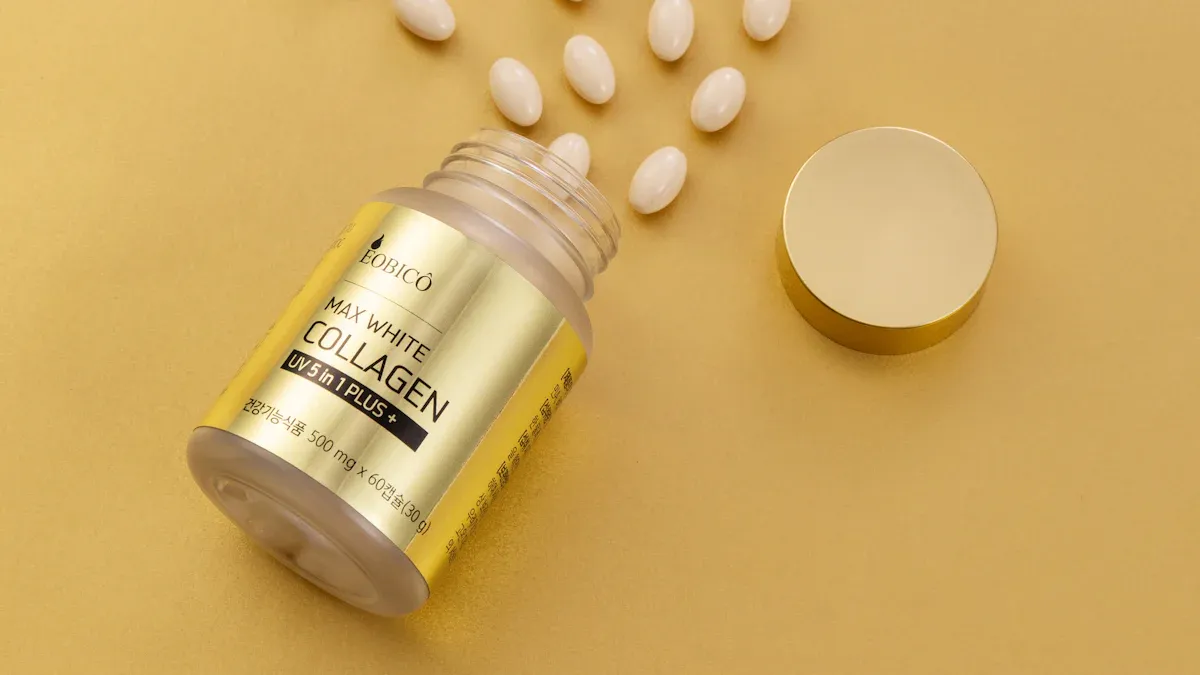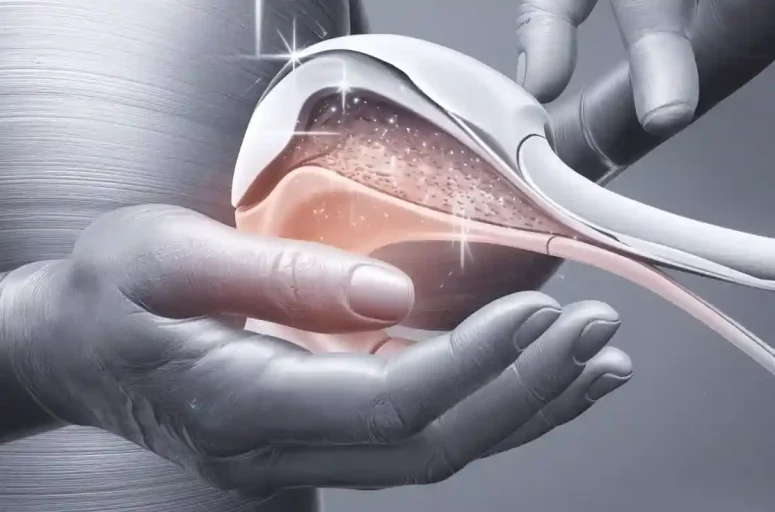
When it comes to healing peptides comparison, you might wonder which works faster—TB-500 or BPC-157? Based on available evidence, BPC-157 often shows quicker results for soft tissue injuries, while TB-500 may shine for larger-scale repair, like muscle or ligament recovery. However, your experience can vary depending on your health, injury type, and how your body responds to peptide therapies.
Understanding how these peptides promote healing is key to making an informed choice in the healing peptides comparison. Each has unique mechanisms and benefits, but safety should always be your priority. Always consult a healthcare professional before starting any peptide therapy.
Disclaimer: This is not medical advice. Always seek guidance from a qualified professional for your specific condition.
Key Takeaways
BPC-157 helps heal soft tissue injuries quickly and lowers swelling.
TB-500 is great for fixing big injuries like torn muscles.
Both peptides help grow new blood vessels for better healing.
Talk to a doctor before using peptides to stay safe.
Using BPC-157 and TB-500 together may speed up recovery.
Your health, injury type, and habits affect how well they work.
BPC-157 works well in animals, but more human studies are needed.
TB-500 helps you move better and is good for injured athletes.
Understanding Healing Peptides: BPC-157 and TB-500
What is BPC-157
BPC-157 is a synthetic peptide derived from a protein found in your stomach. It’s known for its impressive healing properties, especially when it comes to soft tissues like muscles, tendons, and ligaments. You might think of it as a multitasker in the world of healing peptides. It not only promotes tissue repair but also reduces inflammation and protects cells from damage.
One of the standout features of BPC-157 is its ability to encourage angiogenesis. This means it helps your body form new blood vessels, which is crucial for delivering nutrients and oxygen to injured areas. It’s also been shown to protect the lining of your stomach and intestines, making it a potential option for gastrointestinal issues. Interestingly, researchers have even explored its use in managing COVID-19 symptoms due to its anti-inflammatory and immune-boosting effects.
Studies on BPC-157, mostly conducted on animals, highlight its broad healing potential. From musculoskeletal injuries to gastrointestinal lesions, it seems to cover a lot of ground. The best part? No significant side effects have been reported in these studies, making it a promising option for recovery. However, its effectiveness in humans still needs more research.
What is TB-500
TB-500, on the other hand, is a synthetic version of a naturally occurring protein called thymosin beta-4. This peptide plays a key role in cellular migration and tissue regeneration. If you’re dealing with injuries that involve muscles, tendons, or ligaments, TB-500 might be the one to watch. It’s particularly effective in reducing inflammation and promoting wound healing.
One of the most fascinating aspects of TB-500 is its ability to stimulate angiogenesis, just like BPC-157. By encouraging the growth of new blood vessels, it ensures better blood flow to damaged tissues. This helps speed up the healing process. Additionally, TB-500 is known for improving flexibility and reducing adhesions in muscles and tendons, which can be a game-changer for athletes or anyone recovering from physical injuries.
While TB-500 has shown great promise in tissue regeneration and wound healing, it’s important to note that more research is needed to fully understand its safety and ethical implications. Some concerns have been raised about its potential misuse in sports, so it’s always a good idea to consult a healthcare professional before considering it.
Both BPC-157 and TB-500 have unique strengths. BPC-157 shines in soft tissue repair and gastrointestinal protection, while TB-500 excels in larger-scale tissue regeneration and flexibility improvement. Understanding these differences can help you decide which peptide might be the best fit for your recovery needs.
Mechanisms of Action in Peptide Therapy
How BPC-157 Promotes Healing
BPC-157 works like a multitasking repair agent in your body. It activates specific molecular pathways, such as the FAK-paxillin pathway, to enhance tendon outgrowth, cell survival, and migration. This means it helps your cells move to the injured area and start the healing process faster. Studies have shown that BPC-157 improves tissue repair by increasing fibroblast counts and forming stronger collagen fibers. These fibers are essential for rebuilding damaged tissues like tendons and ligaments.
One of the standout features of BPC-157 is its ability to promote angiogenesis. This process forms new blood vessels, ensuring better oxygen and nutrient delivery to the injured site. With improved blood flow, your body can heal more efficiently. Clinical trials have also highlighted its systemic benefits. For example, BPC-157 has been shown to improve recovery metrics like the Achilles Functional Index (AFI), which measures tendon functionality. Whether you’re dealing with a sports injury or chronic pain, this peptide can accelerate tissue repair and improve overall recovery.
How TB-500 Supports Recovery
TB-500 takes a slightly different approach to healing. It focuses on tissue regeneration by enhancing cell migration and promoting angiogenesis. When you’re injured, your body needs cells to move to the damaged area quickly. TB-500 excels at this by stimulating cellular movement, which speeds up the repair process. It also encourages the growth of new blood vessels, ensuring that injured tissues receive the nutrients they need to heal.
What makes TB-500 unique is its ability to improve flexibility and reduce adhesions in muscles and tendons. This is especially helpful if you’re recovering from a severe injury or surgery. Research has shown that TB-500 supports recovery by targeting multiple mechanisms. For example, it promotes angiogenesis, enhances cell migration, and boosts overall tissue regeneration. These combined effects make it a powerful tool for healing large-scale injuries like muscle tears or ligament damage.
Here’s a quick breakdown of how TB-500 works:
Mechanism | Effect on Recovery |
|---|---|
Angiogenesis | |
Cell Migration | Enhances movement of cells to injury site |
Tissue Regeneration | Supports overall healing and recovery |
Both BPC-157 and TB-500 are impressive in their own ways. While BPC-157 focuses on soft tissue repair and inflammation reduction, TB-500 shines in large-scale tissue regeneration and flexibility improvement. Understanding these mechanisms can help you decide which peptide aligns better with your recovery goals.
Healing Peptides Comparison: Key Benefits

Benefits of BPC-157
When it comes to enhanced healing, BPC-157 stands out for its versatility. This peptide is particularly effective in addressing soft tissue injuries, making it a go-to option for muscle, tendon, and ligament repair. Its healing properties extend beyond just physical injuries—it also supports gastrointestinal health and may even help with conditions like ulcers or inflammatory bowel disease.
One of the most impressive aspects of BPC-157 is its ability to promote angiogenesis. By encouraging the growth of new blood vessels, it ensures that injured tissues receive the oxygen and nutrients they need to heal faster. This process plays a crucial role in wound healing and overall recovery. For example, studies in animal models have shown that BPC-157 can restore normal blood flow and reduce complications like portal hypertension after severe injuries. These findings suggest that it could be a game-changer for addressing complex injuries and hemodynamic disturbances.
To give you a clearer picture, here’s a breakdown of documented patient outcomes:
Group | Number of Patients | Significant Improvement (%) | No Improvement (%) |
|---|---|---|---|
BPC-157 Only | 12 | 91.6 | 8.3 |
BPC-157 + TB-500 | 4 | 75 | 25 |
Overall | 16 | 87.5 | N/A |
As you can see, the healing effects of BPC-157 are remarkable, with over 90% of patients experiencing significant improvement when using it alone. This makes it a strong contender in the healing peptides comparison, especially for soft tissue injuries and joint health.
Another benefit of BPC-157 is its anti-inflammatory action. By reducing inflammation, it not only speeds up recovery but also alleviates pain and discomfort. Whether you’re dealing with a sports injury or chronic joint issues, this peptide can help you get back on your feet faster.
Benefits of TB-500
TB-500, on the other hand, excels in large-scale tissue regeneration. If you’re recovering from a major injury, like a torn muscle or ligament, this peptide might be your best bet. Its ability to enhance cell migration ensures that repair cells quickly reach the injured area, kickstarting the recovery process. This makes TB-500 particularly effective for wound healing and improving flexibility in damaged tissues.
One of the standout benefits of TB-500 is its role in reducing adhesions. Adhesions can limit your range of motion and cause long-term discomfort, especially after surgery or severe injuries. By minimizing these, TB-500 helps you regain flexibility and improve joint health. This is why it’s often favored by athletes or individuals recovering from physically demanding activities.
Like BPC-157, TB-500 also promotes angiogenesis. This ensures better blood flow to injured tissues, which is essential for enhanced healing. However, TB-500’s unique strength lies in its ability to support large-scale tissue repair. Whether it’s a muscle tear or ligament damage, this peptide works to rebuild and strengthen the affected area.
Here’s a quick summary of what TB-500 brings to the table:
Improved Flexibility: Reduces adhesions and enhances range of motion.
Faster Recovery: Speeds up cell migration to the injury site.
Joint Health Support: Promotes tissue regeneration for stronger joints.
Enhanced Healing Effects: Encourages blood vessel growth for better nutrient delivery.
If you’re comparing healing peptides, TB-500 shines in situations where large-scale recovery is needed. Its ability to target multiple aspects of the healing process makes it a powerful tool for recovery.
Pro Tip: If you’re dealing with a combination of soft tissue and large-scale injuries, combining BPC-157 and TB-500 might offer synergistic benefits. Always consult a healthcare professional before starting any peptide therapy.
Speed of Healing: BPC-157 vs TB-500

Which Works Faster for Muscle Repair
When it comes to muscle recovery, both BPC-157 and TB-500 have their strengths. However, you might notice differences in how quickly they work depending on the type of injury and your body’s response to peptide therapy. BPC-157 often takes the lead for soft tissue injuries like minor muscle tears or strains. Its ability to promote angiogenesis and reduce inflammation means your body can deliver nutrients and oxygen to the injured area faster. This results in accelerated recovery for smaller-scale muscle damage.
On the other hand, TB-500 shines when dealing with larger injuries or more severe muscle damage. Its unique ability to enhance cell migration ensures that repair cells reach the injury site quickly. This makes it a powerful option for muscle recovery after significant trauma or surgery. If you’re an athlete or someone recovering from intense physical activity, TB-500 might help you regain flexibility and strength more effectively.
So, which one works faster? If you’re dealing with minor muscle injuries, BPC-157 might give you faster recovery times. But for larger-scale muscle recovery, TB-500 could be the better choice. Combining both peptides under professional guidance might even offer a more comprehensive approach to enhancing recovery.
Which is Better for Chronic Injuries
Chronic injuries, like long-term tendonitis or recurring muscle strains, can be tricky to treat. You need a peptide therapy that not only addresses the injury but also supports long-term healing. BPC-157 is often considered a potential treatment for chronic injuries due to its anti-inflammatory properties and ability to protect tissues from further damage. It works well for conditions like tendonitis or joint pain, where reducing inflammation is key to improving mobility and comfort.
TB-500, however, excels in regenerating damaged tissues over time. If your chronic injury involves significant tissue degeneration, this peptide might be more effective. Its ability to promote angiogenesis and reduce adhesions makes it a strong candidate for long-term injury recovery. For example, if you’ve been dealing with a stubborn ligament injury, TB-500 can help rebuild the damaged area while improving flexibility.
Ultimately, the best choice depends on the nature of your chronic injury. If inflammation is your main concern, BPC-157 might be the way to go. But if you’re looking for a potential treatment to regenerate tissues and improve mobility, TB-500 could be more effective. Consulting a healthcare professional can help you decide which peptide aligns better with your recovery goals.
Factors Influencing Healing Outcomes
Dosage and Administration
The way you use healing peptides like BPC-157 and TB-500 can significantly impact your recovery. Dosage and administration methods play a crucial role in determining how effective these peptides are. For instance, taking the right dose ensures your body gets enough of the peptide to trigger healing without overwhelming your system. Some people prefer oral administration, while others opt for injections, which may deliver faster results. Your choice depends on your comfort level and the advice of your healthcare provider.
Timing also matters. Administering peptides at the right time, such as immediately after an injury, can speed up recovery. However, using them too late or inconsistently might reduce their effectiveness. Always follow a structured dosing plan tailored to your needs. This ensures you get the most out of peptide therapy while minimizing risks.
Individual Health and Lifestyle
Your overall health and daily habits can either support or hinder your healing process. Factors like age, diet, and activity levels influence how well your body responds to peptides. For example, if you maintain a balanced diet rich in nutrients, your body will have the building blocks it needs to repair tissues. On the other hand, poor nutrition can slow down recovery.
Lifestyle choices also matter. Regular exercise, adequate sleep, and stress management can improve your body’s ability to heal. If you’re dealing with chronic conditions like diabetes or obesity, your healing might take longer. These conditions can affect blood flow and inflammation levels, making it harder for peptides to work effectively. By focusing on improving musculoskeletal health and adopting healthier habits, you can enhance your recovery outcomes.
Type and Severity of Injury
The nature of your injury plays a big role in how quickly you heal. Minor injuries, like small muscle strains, often respond well to peptides like BPC-157, which can reduce inflammation and promote faster recovery. However, severe injuries, such as torn ligaments or chronic wounds, may require a longer healing period. In these cases, TB-500’s ability to regenerate tissues and improve flexibility becomes more valuable.
Research shows that the severity of an injury can influence how your body reacts to treatment. For example, an imbalance in protease activity can lead to chronic wounds that are harder to heal. Treatments that normalize this balance, combined with the right peptide therapy, can significantly improve outcomes. Understanding your injury type and severity helps you choose the most effective approach for recovery.
Tip: If you’re unsure about the best peptide or treatment plan for your injury, consult a healthcare professional. They can guide you based on your specific needs and health conditions.
Side Effects and Safety in Peptide Therapy
Potential Side Effects of BPC-157
While BPC-157 is often praised for its healing properties, you should still be aware of potential side effects. Most studies on this peptide have been conducted on animals, so human data is limited. However, users have reported mild side effects like nausea, dizziness, or headaches. These symptoms usually occur when the dosage is too high or the peptide is administered incorrectly.
One of the reasons BPC-157 is considered relatively safe is its anti-inflammatory effects. By reducing inflammation, it helps your body heal faster without causing significant harm. That said, long-term safety data is still lacking. If you’re planning to use BPC-157, it’s essential to follow a healthcare professional’s guidance to minimize risks.
Potential Side Effects of TB-500
TB-500, like BPC-157, has shown great promise in promoting recovery. But it’s not without its risks. Some users have reported side effects such as fatigue, temporary lethargy, or mild irritation at the injection site. These are generally short-lived and manageable. However, prolonged use of peptides like TB-500 could potentially disrupt your body’s natural balance of growth factors.
It’s worth noting that other peptide therapies, such as Engrifta, have been linked to more severe side effects. These include liver and kidney issues, anemia, and changes in clinical chemistry. While TB-500 hasn’t been directly associated with these problems, it’s a reminder that peptide therapies should be used cautiously. Always monitor your body’s response and consult a professional if you notice anything unusual.
Safety Considerations and Precautions
When it comes to peptide therapy, safety should always be your top priority. Start by ensuring you’re using high-quality peptides from a reputable source. Poor-quality products can increase the risk of side effects and reduce the effectiveness of your treatment.
Dosage is another critical factor. Taking too much can overwhelm your system, while too little might not deliver the desired results. Timing also matters. Administering peptides shortly after an injury, especially for soft tissue injuries, can enhance their effectiveness. However, using them inconsistently or for extended periods may lead to complications.
Your overall health plays a big role in how your body responds to peptides. Conditions like diabetes or obesity can slow down healing and increase the risk of side effects. Maintaining a healthy lifestyle, including a balanced diet and regular exercise, can improve your recovery outcomes.
Note: Always consult a healthcare professional before starting peptide therapy. They can help you determine the right dosage, timing, and administration method for your specific needs.
Choosing between BPC-157 and TB-500 depends on your specific recovery goals. If you’re looking for faster healing of soft tissues or gastrointestinal issues, BPC-157 might be the better option. It reduces inflammation and boosts blood flow to speed up recovery. On the other hand, TB-500 excels in muscle repair and large-scale tissue regeneration, making it ideal for severe injuries.
Key Highlights:
BPC-157 promotes angiogenesis and reduces inflammation for quicker soft tissue healing.
TB-500 enhances cell migration and supports muscle recovery.
Evidence Type | Description |
|---|---|
Urinary Peptide Biomarkers | Predicts outcomes in trauma patients through altered peptide identification. |
Significant Findings | 191 peptides linked to recovery outcomes, offering personalized insights. |
Your health, injury type, and lifestyle play a big role in how these peptides work for you. Always consult a healthcare professional to create a treatment plan tailored to your needs.
FAQ
1. Can you use BPC-157 and TB-500 together?
Yes, combining BPC-157 and TB-500 may offer synergistic benefits. BPC-157 focuses on soft tissue repair, while TB-500 excels in large-scale tissue regeneration. Always consult a healthcare professional before combining peptides to ensure safety and proper dosing.
2. How long does it take for these peptides to show results?
Results vary based on the injury type and your body’s response. BPC-157 often shows effects within a few days for minor injuries. TB-500 may take a week or more for noticeable improvements, especially in severe injuries.
3. Are these peptides safe for long-term use?
Long-term safety data is limited. Most studies suggest short-term use is safe when following proper dosages. Overuse might disrupt your body’s natural healing processes. Always follow your healthcare provider’s recommendations to minimize risks.
4. Do these peptides require a prescription?
In many countries, peptides like BPC-157 and TB-500 are not FDA-approved for human use and may require a prescription. Check your local regulations and consult a healthcare provider before purchasing or using them.
5. Can athletes use these peptides?
Athletes often use peptides for recovery, but some sports organizations ban them due to potential performance-enhancing effects. If you’re an athlete, check your sport’s regulations before considering peptide therapy.
6. Are there any dietary restrictions while using peptides?
No specific dietary restrictions exist, but a nutrient-rich diet can enhance healing. Focus on foods high in protein, vitamins, and minerals to support tissue repair and recovery while using peptides.
7. What’s the best way to administer these peptides?
Most users prefer subcutaneous injections for faster absorption. Some forms of BPC-157 are available orally, but injections are generally more effective. Always follow your healthcare provider’s instructions for proper administration.
8. Can peptides help with aging-related issues?
Yes, peptides like BPC-157 and TB-500 may support tissue repair and reduce inflammation, which can help with aging-related issues like joint pain or reduced mobility. However, they’re not a cure-all and should be used under medical supervision.
Tip: Always prioritize safety and consult a professional before starting any peptide therapy.



1 comment